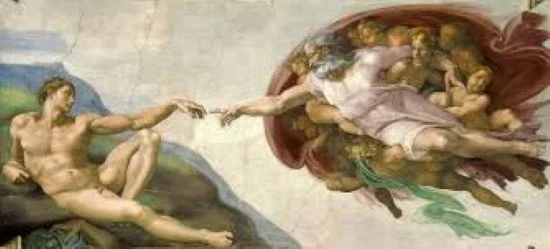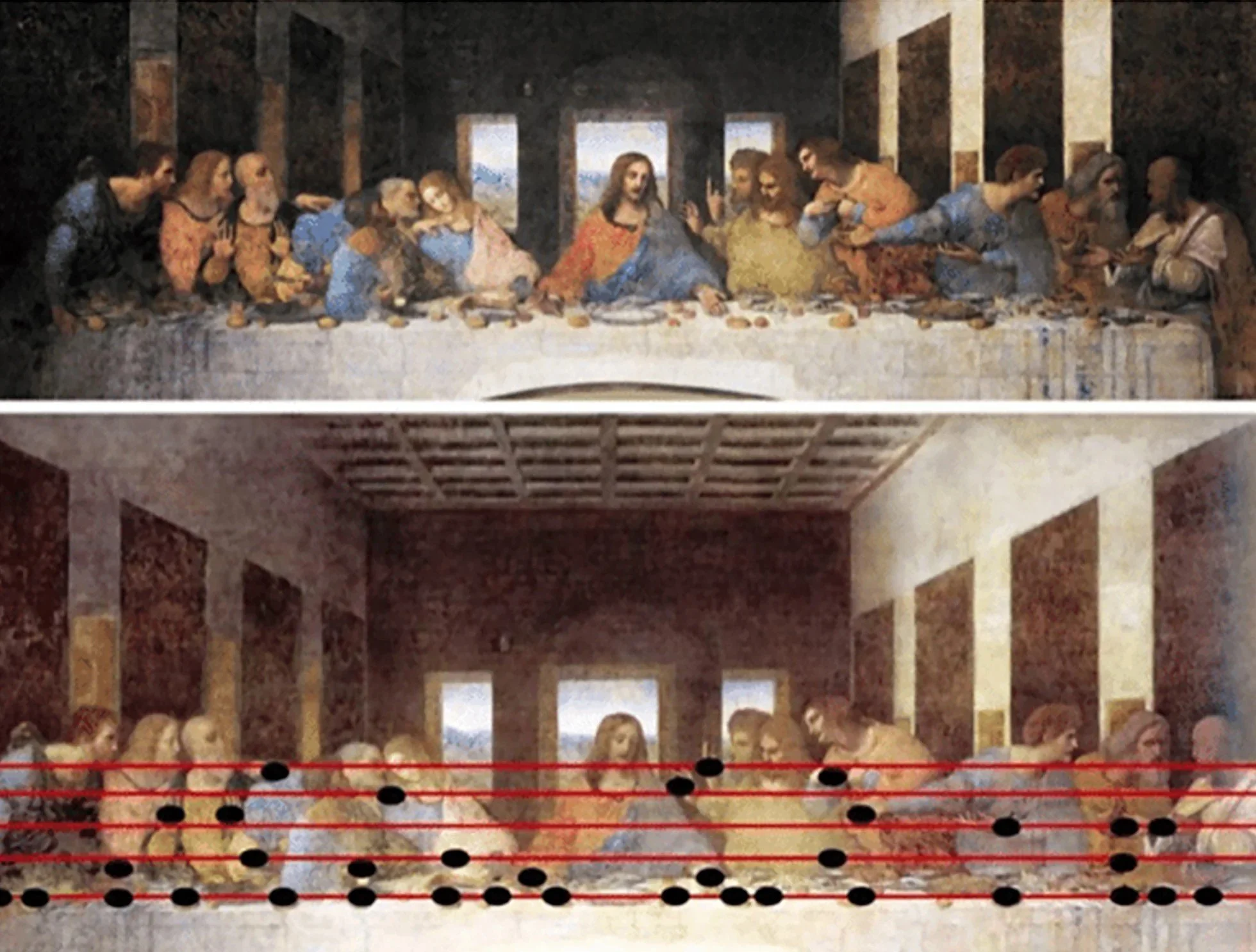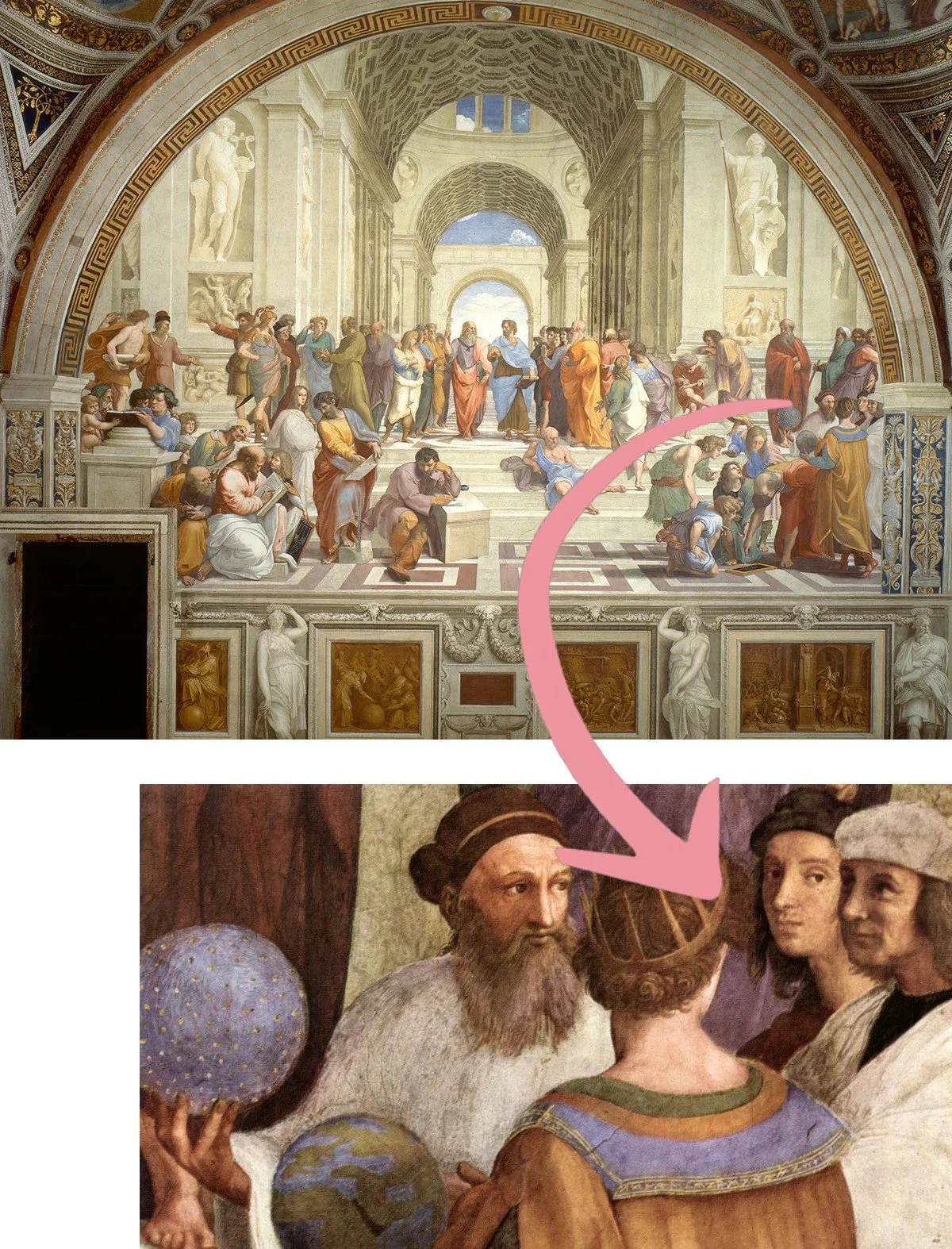Scenes Hidden in the Canvas
Art history is full of fascinating stories, but sometimes the most interesting tales are the ones that aren’t immediately obvious. Just like in some movies, Artist have been placing “Easter Eggs” in their paintings for years. Today we are going to explore some of these paintings, and together we can discover the hidden meaning behind them.
The Creation of Adam
The Creation of Adam, by Michelangelo
Outline of the Brain
Michelangelo’s masterpiece, The Creation of Adam, is a profound exploration of both the divine and the human condition, rich with symbolism that invites interpretation. Among the most compelling elements is the discernible outline of a brain nestled within the folds of God’s cloak. This shape has sparked intrigue: does it suggest the divine origin of human intelligence, serving as a reminder of the heavenly gift of reason bestowed upon mankind? Or is it a more pointed commentary, perhaps an admonition directed at the pope, urging him to "use his head"?
Adam’s Position
In this iconic scene, Adam is portrayed as a reclining figure, symbolizing humanity’s potential and open receptiveness to the divine essence of life. His relaxed posture conveys both vulnerability and an innate readiness to embrace the spark of creation. Adam’s outstretched hand, reaching towards God, signifies the intimate connection between the divine and humans, a gesture of longing for enlightenment and understanding.
Figures Around God
Surrounding God are figures that are often interpreted as representations of Eve and the future generations of humanity, born from the union of Adam and Eve. These figures not only reinforce the theme of creation but also highlight the continuity of life and the shared human experience. They frame the moment of divine touch, emphasizing the communal aspect of existence, where life is intricately linked to the act of creation itself.
In The Creation of Adam, Michelangelo masterfully intertwines artistry and philosophy, prompting viewers to reflect on the nature of existence, the relationship between God and man, and the profundity of divine intelligence illuminating human consciousness.
The Last Supper
The Hidden Code in the last supper, Leonardo da vinci
Some theorists believe that the hands of Jesus and the apostles, along with the placement of the bread, form musical notes that create a hidden melody. This intriguing notion invites us to ponder whether Leonardo da Vinci, in all his genius, could have ingeniously embedded a secret song within "The Last Supper." The strategic positioning of every element in this iconic painting raises questions about the intersection of art and mathematics, hinting at an underlying harmony that transcends mere visual beauty.
Da Vinci, known for his meticulous attention to detail and mastery of various disciplines, often sought to fuse science and art. His fascination with music, evidenced by his writings on the subject, may suggest the possibility of a deeper auditory experience encoded within the imagery. The alignment of gestures, expressions, and objects in the composition might indeed resonate with a rhythmic structure, encouraging viewers to explore beyond the surface.
As we contemplate this idea, we are reminded of the power of interpretation in art—how it can evoke sensory experiences that go beyond sight, firing the imagination and inviting a dialogue between the observer and the masterpiece itself. If there is indeed a melody hidden in the folds of the canvas, it speaks to da Vinci's unparalleled ability to weave complexity into simplicity, challenging us to listen with our eyes and feel the music that may echo through the ages.
The School of Athens
The School of Athens, by Raphael
Raphael’s The School of Athens (1509-1511) is indeed a masterpiece that showcases an assembly of great minds such as Plato, Aristotle, and Socrates, celebrated for their groundbreaking thoughts in philosophy and mathematics. Among these illustrious figures, Raphael humbly presents himself as a young scholar, positioned thoughtfully near the far right of the canvas. This inclusion serves not only as a personal statement but also as a reflection of his belief in the continuum of knowledge, suggesting that art and philosophy are intertwined threads in the tapestry of intellectual pursuit. His gaze towards the viewer encourages us to recognize the importance of creativity in contributing to the ongoing dialogue among scholars and thinkers throughout history. This subtle nod to his own identity in the context of such eminent company underscores the value of individual vision within the broader narrative of human thought.
Art History (but don’t quote me on that)
When we look back on history we just hear the boring sides. The part of history that is important but I like the juicy pieces of history. The funny parts of history...
Some juicy gossip on famous artist!
Michelangelo:
Notoriously grumpy & unsociable: Once wrote a poem complaining about his back pain from painting the Sistine Chapel, comparing himself to a "Syrian Bow"
Michelangelo : To Giovanni da Pistoia
1509
I've already grown a goiter from this torture,
hunched up here like a cat in Lombardy
(or anywhere else where the stagnant water's poison).
My stomach's squashed under my chin, my beard's
pointing at heaven, my brain's crushed in a casket,
my breast twists like a harpy's. My brush,
above me all the time, dribbles paint
so my face makes a fine floor for droppings!
My haunches are grinding into my guts,
my poor ass strains to work as counterweight,
every gesture I make is blind and aimless.
My skin hangs loose below me, my spine's
all knotted from folding over itself.
I'm bent taut as a Syrian bow.
Because I'm stuck like this, my thoughts
are crazy, perfidious tripe:
anyone shoots badly through a crooked blowpipe.
My painting is dead.
Defend it for me, Giovanni, protect my honor.
I am not in the right place - I am not a painter.
The Case of the Missing Nipple:
A wealthy (and slightly blind) patron commissioned a grand biblical scene. Upon the unveiling, he loudly exclaimed "Magnificent! but why does Saint Peter have three nipples?" Michelangelo with a sigh, blamed it on lighting.
Leonardo da Vinci:
Was a notorious procrastinator - Which in today's society would be called ADHD: Many of his projects, including some famous paintings, were left undone. Further proof he was ADHD...
The Mona Lisa:
While painting the Mona Lisa he got distracted by a passing butterfly, and invention idea, and then the sudden urge to dissect a frog...The Mona Lisa's enigmatic smile? Or her just waiting patiently patiently.
Jean-Honore Fragonard
The Swing:
Fragonard "The Swing" was almost a disaster. The Patron wanted a painting of his mistress swinging, while he hid in the bushes to watch her. The Patron nearly fell out, revealing more than intended. Fragonard, with quick thinking, added a conveniently placed brush to cover the mishap. Imagine the baron's face when he realized his "secret" rendezvous was immortalized in paint, complete with a strategically placed shoe flying off. (that at the time was risqué) One wonders if his wife ever saw it.
Changes to the Swing:
The bishop in the original commission was changed from a young to an old man, which is still quite humorous.
Claude Monet:
Very particular about his garden , he would get extremely upset if anyone touched his flowers.
Known for his very elaborate and strange hat collection.
As Monet aged, his eyesight deteriorated due to cataracts. This affected his perception of color. Some art historians believe it contributed to the increasingly abstract quality of his later works. So, those blurry water lilies? Maybe his eyesight was just bad that day.
The Publics Confusion:
A confused art critic, upon seeing Monet's "Impression, Sunrise," exclaimed "Is this a painting, or a blurry photograph? I think my glasses are dirty!" The public agrees, initially.
Monet's Garden Mishap:
Obsessed with capturing the fleeting light in his garden, he trips over a gnome, falls into his pond, and emerges dripping wet, declaring "Perfect! The water's reflection!"
Michelangelo Merisi da Caravaggio
The master of dramatic lighting and even more dramatic behavior, offers a treasure trove of funny (and often scandalous) facts:
He was basically the rockstar of the Baroque era, complete with temper tantrums and legal troubles. Imagine him throwing paint pots instead of a guitar.
Known for using real people for reference models, often from the streets. He used prostitutes as models for his religious paintings.
His temper was infamous. He was involved in many brawls, even killing a man in a duel. After killing a man, he spent the rest of his life on the run, painting masterpieces in dingy taverns constantly looking over his shoulder.
"You don't like the shadows in my paintings! En Garde!" I can imagine art critics trembling at the thought of giving him a bad review.
Gian Lorenzo Bernini:
Known to have a very dramatic flair and would often act out the poses he wanted in his sculptures.
He was known for his confidence and sometimes arrogant personality. Often taking on several projects at once, sometimes getting his blueprints mixed up. He built a theatrical stage in a church on accident, where he later added a statue on.
Frida Kahlo:
She had a very dark sense of humor & she enjoyed shocking people.
Known for throwing very lively and eccentric parties.
Frida Kahlo famously embraced her unibrow and light mustache as a deliberate rejection of European beauty standards and a celebration of her own identity, particularly her Mexican heritage and her unique features.
Andy Warhol:
Known for his very strange wigs, he once said "If you wear a wig, everybody notices. But if you then dye the wig, people notice the dye."
Also, known for his deadpan humor and enigmatic pronouncements. He often gave cryptic or nonsensical answers in his interviews, leaving people wondering if he was serious or just being playful. This made him very difficult person to interview and added to his mystique.
Now saving the best for last....
Salvator Dali
Dali owned a lobster phone. One day he tried to make a phone call using his lobster phone. The operator, understandably confused, hangs up. Dali, unfazed declares its "successful communication with the subconscious."
He walked an Anteater on a leash in Paris... yes, and Anteater.
He had a very public fear of grasshoppers.
He was known also for his very elaborate and strange public appearances.
He owned an ocelot named Babou, which he took to restaurant bills by drawing on the back of the check. Restaurants were often too eager to own an original Dali sketch, to even cash them.
That time he tricked Yoko Ono out of 10,000.00. Yoko Ono paid 10K for a hair from Dali's mustache, he ended up sending her a blade of grass instead.



